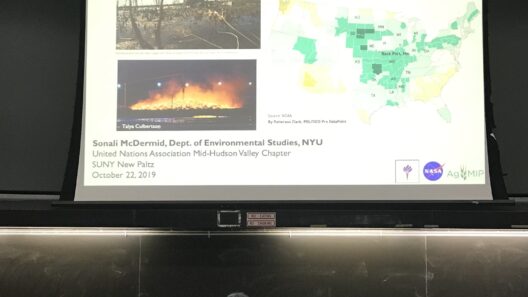Heating Up: Understanding Our Warming World
As the world experiences increasingly unpredictable weather patterns, one may ponder: what is the actual state of our planet’s climate? This inquiry unveils a complex tapestry woven with scientific facts, socioeconomic implications, and environmental ethics. The reality of global warming is not a mere abstraction; it is an urgent crisis that demands our immediate attention.
Climate change is primarily driven by the accumulation of greenhouse gases (GHGs) in the atmosphere, such as carbon dioxide (CO2), methane (CH4), and nitrous oxide (N2O). These gases trap heat from the sun, leading to a phenomenon known as the greenhouse effect. The combustion of fossil fuels for energy, deforestation, and intensive agriculture are significant contributors to these emissions. Consequently, the Earth’s average temperature has risen by approximately 1.2 degrees Celsius since the late 19th century, a trend that poses dire consequences for ecosystems, human health, and economic stability.
One of the most telltale signs of a warming world is the increase in frequency and intensity of extreme weather events. Hurricanes are more potent, droughts are prolonged, and heatwaves have become commonplace. If you reside in a coastal region, have you ever considered how many times you have witnessed climate-related flooding that impacted your community? Such scenarios are likely to become more frequent without decisive action to mitigate climate change.
Moreover, the ramifications of global warming extend into biodiversity loss. Numerous species face extinction as their natural habitats become inhospitable due to rising temperatures and changing precipitation patterns. Coral reefs, often called the “rainforests of the sea,” are particularly vulnerable. They experience bleaching events when water temperatures exceed a certain threshold, disrupting the delicate balance that sustains marine life. Protecting biodiversity is not merely an ethical obligation; it is essential for maintaining the health and resilience of our ecosystems.
Human health, too, is at risk. Climate change exacerbates air quality issues, contributing to respiratory ailments such as asthma and chronic obstructive pulmonary disease (COPD). The steady rise in temperatures facilitates the spread of vector-borne diseases, including malaria and dengue fever, as warmer climates expand the habitats of disease-carrying insects. The intersection of climate change and public health necessitates a nuanced understanding of how these factors intricately influence one another.
Economic implications are substantial as well. Natural disasters linked to climate change can devastate infrastructure, disrupt supply chains, and displace communities. According to various reports, the costs associated with damage from extreme weather events are projected to escalate into the trillions of dollars by the mid-21st century. As communities grapple with the financial burdens imposed by climate-related disasters, questions arise: who bears the brunt of these costs, and how can we effectively mobilize resources to address these challenges?
Transitioning to a low-carbon economy emerges as a vital response to combat climate change. Renewable energy sources, such as solar, wind, and hydropower, offer sustainable alternatives to fossil fuels. For instance, solar energy has seen a remarkable growth in adoption rate over the past decade. With advancements in technology, its affordability equates to an economic opportunity that can invigorate jobs in green sectors while simultaneously addressing GHG emissions. However, this shift requires collaborative efforts from governments, businesses, and individuals alike.
Moreover, embracing sustainable land-use practices can act as a buffer against the effects of climate change. Agroforestry, regenerative agriculture, and reforestation are pathways that contribute to carbon sequestration, which is essential for offsetting emissions. Such practices also enhance soil health and promote biodiversity. Imagine cultivating a future where farming not just feeds populations but also restores the planet—this is a challenge that invites innovation and environmental stewardship.
Education and awareness are integral to fostering a culture of climate responsibility. Engaging with communities to understand the science of global warming empowers individuals to make informed decisions. Moreover, advocacy for policy changes that prioritize environmental protection can lead to substantial progress. Legislative frameworks that promote clean energy, establish carbon pricing, and support sustainable agriculture are critical steps toward effective climate action. Are we willing to engage in the necessary advocacy to ensure that future generations inherit a planet capable of sustaining life?
In conclusion, the phenomenon of global warming is not merely an academic concern but a pressing reality with multifaceted implications. The challenge lies before us: transition to sustainable practices, advocate for proactive policies, and foster awareness within our communities. By addressing the root causes of climate change collaboratively, we can mitigate its impacts and pave the way toward a healthier, more resilient world. The time for action is now—let us rise to the occasion and safeguard our planet for future generations.







